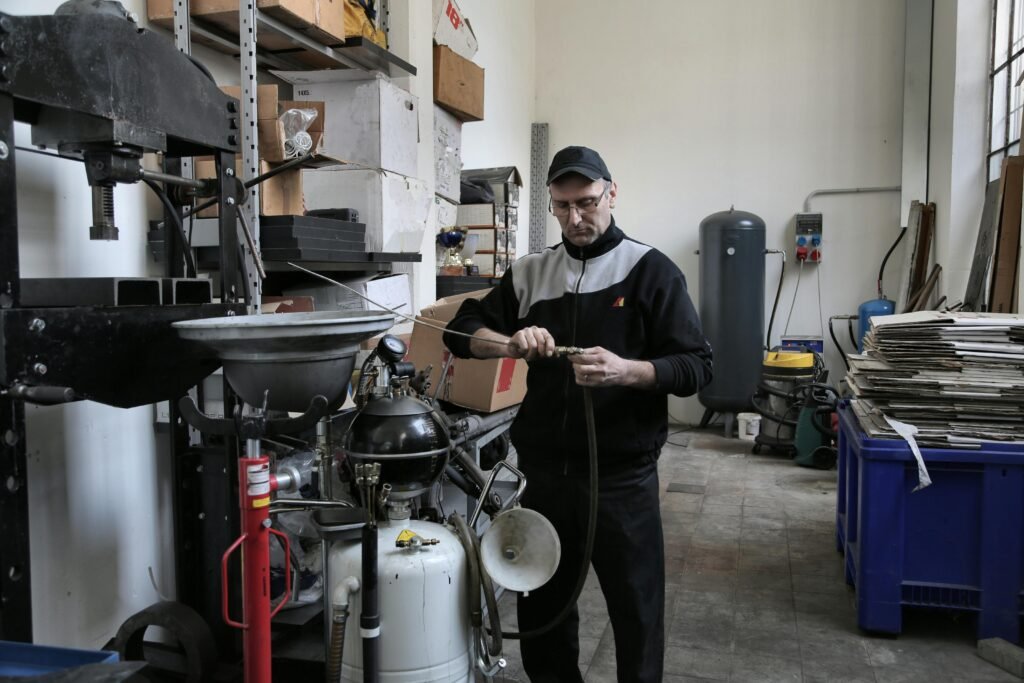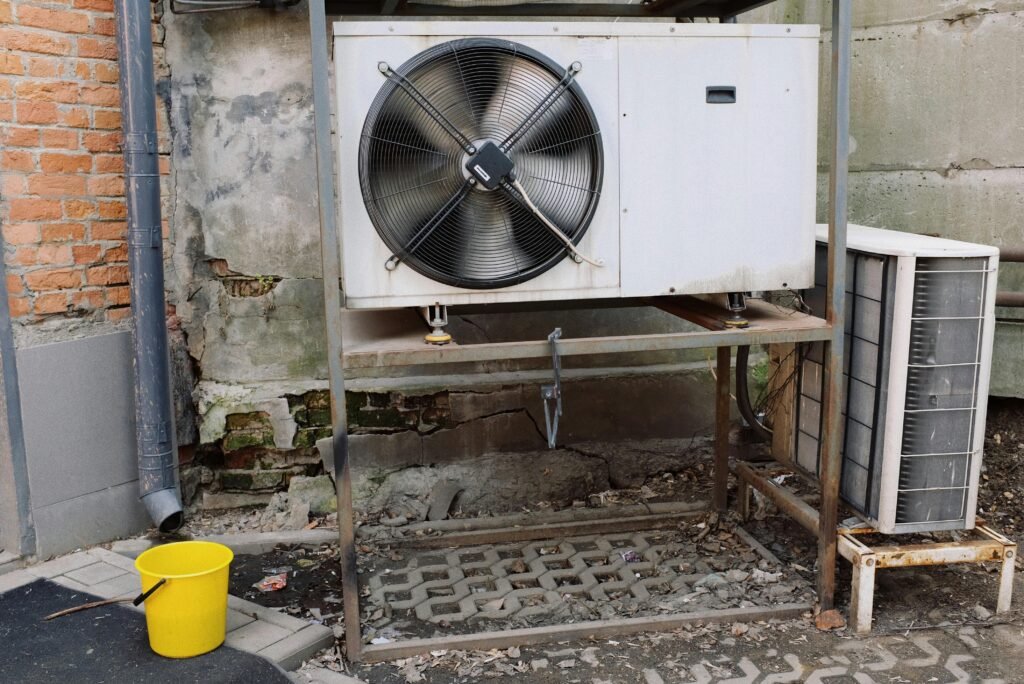
Imagine cruising down the highway in your Freightliner Cascadia, the sun beating down and the landscape whizzing by. You expect a steady cool from your A/C system, but instead, the temperature inside the cabin fluctuates unpredictably, leaving you in a sweat one minute and shivering the next. This guide to troubleshooting a fluctuating temperature issue in your Freightliner Cascadia’s A/C system will steer you through the steps to diagnose and solve the problem, ensuring your comfort and safety on those long hauls. It’s like having a trusty co-pilot by your side, dedicated to keeping your journey as smooth as the road ahead.

Understanding the Freightliner Cascadia A/C System
Components of the A/C system
Let’s start by familiarizing you with the key parts of the Freightliner Cascadia A/C system. The components work together to keep your cab comfortable. They include the compressor, which pumps refrigerant through the system; the condenser that dissipates heat as the refrigerant flows through it; the expansion valve or orifice tube that regulates refrigerant flow; the evaporator that absorbs heat from the cabin; and other elements like refrigerant hoses, A/C belts, accumulator or receiver drier, and the blower motor. Understanding how these parts interconnect helps in diagnosing any issues you might face.
How the A/C system regulates temperature
You might be curious about how your Freightliner Cascadia’s A/C system maintains the cab’s cool atmosphere. It’s a matter of physics. The compressor compresses the refrigerant, turning it into a high-pressure, hot gas. This gas then flows to the condenser, which cools it down until it turns into a liquid. It then moves to the evaporator through the expansion valve. Here, the refrigerant vaporizes, absorbing heat from the air in the cabin, which the blower motor then pushes back out into the cabin as cool, fresh air.
Common reasons for temperature fluctuations
Temperature inconsistencies can happen for various reasons—anything from a simple settings error to a complex mechanical failure. Common issues often involve low refrigerant levels, a malfunctioning compressor, blocked condenser coils, electrical faults, or failing blower motors. It’s essential to recognize these potential problems to maintain an optimal performing A/C system.
Initial Assessment of the Problem
Observing the symptoms of fluctuation
When you notice the temperature inside your Freightliner Cascadia isn’t quite right, take a moment to gauge what’s happening. Is the air not cold enough, or does it vary between warm and cool sporadically? Are there any unusual noises when the A/C is running? Understanding the symptoms can provide valuable insights into the nature of the problem.
Checking A/C system settings
Before rolling up your sleeves, check the A/C system’s settings. It might sound trivial, but it’s not unheard of to have temperature fluctuations simply because the controls are not set correctly. Ensure the thermostat is set to the desired temperature and that the system is on the correct mode for cooling.
Reviewing the maintenance history
Are you acquainted with the service history of your truck’s A/C system? Your vehicle’s maintenance log can reveal a wealth of information. Previous A/C repair work, consistent refrigerant top-offs, or parts replacements can be indicators of where to start diagnosing the issue.
Visual Inspection of A/C Components
Inspecting A/C compressor for wear and damage
Your A/C compressor is the heart of the cooling system, and any sign of wear or damage can lead to temperature troubles. Visually check for signs of leaks, cracks, or visible damage to the compressor body. Also, listen for any abnormal noises that might indicate internal damage or worn bearings.
Examining belts and pulleys for proper tension
The compressor is driven by belts connected to the engine’s pulleys. With your engine off, inspect the belts for any cracks, fraying, or signs of glazing. Also, make sure the belts have the correct tension, as loose belts can cause slippage and reduced compressor performance.
Confirming integrity of A/C hoses and connections
Inspect all refrigerant hoses and connections for signs of wear, fraying, or oil residue, which may denote refrigerant leaks. Check the fittings and clamps to ensure they’re secure and not contributing to potential leakage or pressure loss.
Refrigerant Level Check
Understanding refrigerant’s role in temperature control
Refrigerant is the lifeline of your A/C system. It carries heat away from the cabin and expels it outside. An incorrect refrigerant level—either too low or too high—can lead to erratic temperature control. Therefore, maintaining the proper refrigerant level is crucial.
Performing a pressure test
You can determine if your A/C system has the correct refrigerant charge by performing a pressure test. This involves using A/C gauges to measure the system’s high and low side pressures against the manufacturer’s recommended levels.
Identifying signs of refrigerant leaks
If you suspect a refrigerant leak, look for oily spots on A/C components, which can signal where the refrigerant might be escaping. Moreover, a noticeable hissing sound when the A/C is running could also indicate a leak in the system.

Thermostat and Temperature Control Analysis
Testing thermostat calibration
Is your thermostat accurately reflecting the cabin temperature? Use a separate thermometer to verify the A/C’s output versus what’s shown on the thermostat. If there’s a discrepancy, the thermostat may need recalibration or replacement.
Inspecting for electrical issues
Electrical faults can wreak havoc on your A/C system. Inspect the wiring running to the thermostat and control panel for any signs of damage or corrosion. Loose or frayed wires can lead to intermittent power and temperature fluctuations.
Evaluating temperature control knobs or switches
Lastly, the control panel itself could be the culprit. If knobs or switches feel loose or unresponsive, they might not be effectively commanding the A/C system, leading to inconsistent cooling.
Electrical Diagnostics
Checking the fuse and relay conditions
Begin your electrical diagnostics by checking the A/C system’s fuses and relays. A blown fuse or a faulty relay can disrupt the electrical current to the A/C system, causing temperature inconsistencies or a complete shutdown.
Examining wiring harnesses for shorts or corrosion
If the fuses and relays are in good working order, turn your attention to the wiring harnesses. Look for any shorts, exposed wires, or corrosion, which could prevent the A/C system from operating correctly.
Testing the A/C control module
The A/C control module serves as the system’s brain, and if it’s malfunctioning, your A/C will behave erratically. Using diagnostic tools, you can test the module’s function to ensure it’s sending and receiving the correct signals.

Airflow and Ventilation Check
Assessing the condition of cabin air filters
A dirty or clogged cabin air filter restricts airflow, reducing the A/C system’s efficiency. Check your air filters to make sure they’re clean and replace them if needed to ensure optimal air quality and flow.
Evaluating blower motor function
Your blower motor is what pushes the cooled air into the cabin. Listen for unusual sounds and monitor air output at different speeds to make sure the motor isn’t failing.
Inspecting for blockages in vents and ducts
Finally, inspect your vents and ducts. If they’re obstructed by debris or foreign objects, they could hamper the A/C’s ability to cool the cabin evenly.
Condenser and Cooling Fan Inspection
Cleaning debris from the condenser fins
Inspect the condenser‘s fins for any debris like leaves, bugs, or dirt that might block airflow. Carefully clean the fins to preserve their condition and ensure they can effectively expel heat.
Testing cooling fan operation
The cooling fans aid in dissipating heat from the condenser. Watch the fans while the A/C is running to confirm they’re activating properly and providing sufficient airflow to cool the refrigerant.
Checking for condenser damage
Examine the condenser for any signs of damage such as dents, punctures, or bent fins. These issues can impair the condenser’s ability to cool the refrigerant, resulting in less effective cabin cooling.

Climate Control System Calibration
Performing system reset procedures
If your A/C system just isn’t right, sometimes all it takes is a reset. Consult your Freightliner Cascadia’s manual for the proper procedure to reset the climate control system, which can sometimes resolve minor glitches.
Using diagnostic tools for recalibration
In some instances, diagnostic tools are necessary to recalibrate the climate control system accurately. These sophisticated tools interface with the truck’s onboard computers to ensure every component functions in harmony.
Ensuring proper blend door operation
Blend doors control the mix of hot and cold air entering the cabin. Verify that these are functioning correctly, as a stuck or broken blend door can lead to temperature fluctuations and discomfort.
Preventive Maintenance and Best Practices
Scheduling regular A/C system check-ups
To prevent unexpected temperature fluctuations, regularly schedule A/C system inspections as part of your vehicle’s maintenance routine. This practice helps catch minor issues before they turn into bigger problems.
Keeping a log of temperature observations
Maintain a log of your cab’s temperature performance. Documenting instances where the A/C doesn’t seem to be working as it should can be invaluable for pinpointing patterns that may direct you to the underlying problem.
Adopting usage guidelines for optimal performance
Lastly, develop good A/C usage habits. Running the system in accordance with best practices, such as not overloading it on extremely hot days or ensuring it’s used periodically in the off-season, can help maintain its longevity and effectiveness.
